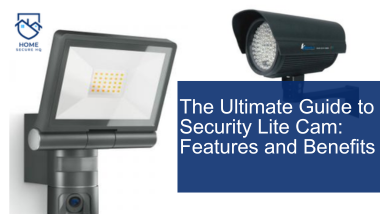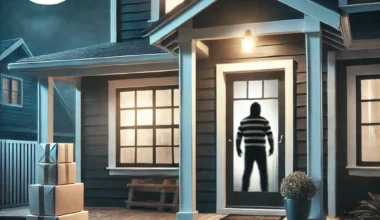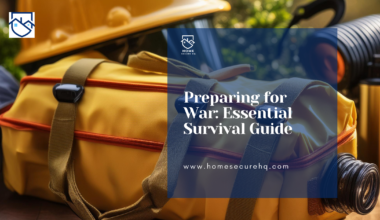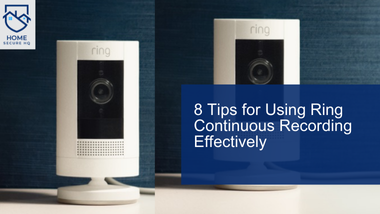When we think of home, we picture a safe haven where we can relax and feel secure. However, emergencies like break-ins can quickly disrupt that peace, leaving us scrambling for a safe place.
Knowing the safest hiding spots in your home prepares you to stay alert and protect yourself from any danger.
In this post, we’ll explore some of the best emergency hiding spots in your home during a break-in, explain why each place works, and provide tips to stay calm and protected.
Let’s get started on how to be prepared for the unexpected.
Why Knowing Hiding Spots Matters
In an emergency situation, being able to find a secure hiding place can buy you time until help arrives. The goal isn’t just to hide; it’s to hide safely.
Choosing a secure, out-of-sight location where you can stay quietly without drawing attention can make all the difference.
Even if you never face a break-in, knowing where to go helps you feel more confident. And while no one plans on dealing with an intruder, having a plan in place can significantly reduce the risk of harm.
Top Hiding Spots in Your Home
Here are some of the most effective and discreet hiding places in the average home. While the best spot for you will depend on your house’s layout, these are generally good starting points.
1. A Large Closet in the Back of the House
A large closet, especially one in the back of the house, can be a great hiding spot. Intruders often head for areas like the front door, living room and master bedroom first, where they assume valuables are stored.
By hiding in a backroom closet, you avoid areas they’re more likely to check. Make sure the closet has an interior lock if possible, and store a phone there if you can. Clothing or blankets can help you stay concealed and reduce noise if you need to make an emergency call.
2. Under the Stairs or a Staircase Closet
If you have a storage space under the stairs, it’s typically dark and out of view, making it a great place to hide.
Many intruders overlook closets like these as they tend to search for valuables, not obscure storage spaces. However, since stair closets can sometimes echo, it’s best to stay very still and quiet.
For instance, when you hear someone moving around upstairs. Hiding under the stairs, you’re unlikely to be noticed, allowing you to stay silent and safe.
3. Behind a Tall Dresser or Cabinet
If you have a bedroom or study with large furniture, hiding behind a tall dresser or cabinet can be a useful strategy.
This setup works best if the furniture is positioned against the wall, leaving a space behind it that isn’t immediately obvious.
Avoid moving heavy items suddenly, as noise can draw attention. Try to gently ease into the space without bumping into anything.
4. In the Attic (if Easily Accessible)
While an attic might seem out of reach in a hurry, if it’s accessible, it can be a very effective place to hide. Intruders rarely think to look in attics, especially if there’s no obvious access.
However, consider if your attic door makes noise or if getting up there requires significant time. Accessibility is key here.
In one case, a homeowner avoided detection by quietly moving into the attic through a ceiling access panel. The intruder didn’t notice because the attic entrance was hidden behind a shelf.
5. Basement Utility Room or Furnace Room
If you have a basement, the utility or furnace room can be a useful hiding spot. Intruders rarely check these areas because they’re often dimly lit, uninviting, and typically don’t contain valuables.
The basement also puts an extra floor between you and potential intruders, buying you valuable time. If your utility room has a door that locks, use it. Be mindful of anything that might make noise if moved or bumped, as utility rooms often contain metallic pipes or tools.
6. Bathtub with a Shower Curtain Drawn
In a pinch, the bathroom can serve as a reasonable hiding spot, especially if you have a shower curtain. Intruders often do not look behind curtains right away, and the bathroom is generally not their first stop.
Sit quietly in the tub and keep the curtain drawn. If you have your phone, text emergency contacts instead of calling to avoid noise.
7. Behind Heavy Drapes or Curtains
If your home has large, floor-to-ceiling drapes or curtains, they can provide a quick, temporary hiding spot. While not as secure as a locked room, heavy drapes can work if you’re pressed for time and need to conceal yourself quickly.
In homes with bay windows or large dining room drapes, hiding behind thick fabric can offer temporary protection if you need a quick place to stay out of sight.
8. Underneath a Bed (Only as a Last Resort)
Although hiding under a bed might seem obvious, it can still work in certain situations. Some beds have deep frames, which make it harder for an intruder to see underneath. If you use this option, try to keep as close to the wall as possible.
This spot should be used as a last resort. If possible, slide a few boxes or storage bins in front of you to stay further out of view.
9. Pantry or Kitchen Cabinets
Depending on the layout, a pantry or kitchen cabinet can be a surprisingly effective hiding place, especially in larger kitchens. Choose cabinets low to the ground where an intruder is less likely to search.
For example, some pantries are built with small nooks or hidden spaces. If you have a pantry door with a latch, even better. Squating into a low cabinet and closing the door can offer temporary concealment.
10. A Pre-designated Safe Room
If you’re looking to be highly prepared, consider designating a “safe room” in your home. A safe room doesn’t have to be an expensive, reinforced space; it could be any room with a strong lock.
Perhaps with supplies like a phone, flashlight and first aid kit. Many people choose a back bedroom or a large closet with a locking door.
Equip your safe room with essentials, such as bottled water and a backup phone charger. Practicing a safe room plan with your family can also ensure everyone knows where to go in an emergency.
Additional Tips for Staying Safe
While knowing where to hide is important, here are a few other actions that can make a difference during a break-in:
- Remain Calm and Silent:
Breathing deeply and focusing on staying quiet can prevent panic, which may otherwise lead to noise or hasty movements.
- Keep a Phone with You:
If possible, bring a cell phone to contact authorities silently (e.g., texting 911 if that service is available in your area).
- Alert Trusted Contacts:
If you can text without making noise, reach out to a friend, family member, or neighbor to alert them to your situation.
- Be Aware of Your Surroundings:
Listen for clues as to where the intruder is in the house. Knowing this can help you avoid accidental encounters.
- Know Emergency Exits:
If safe and necessary, know where you can exit the home if you have an opportunity to leave safely.
Final Thoughts
While it’s unsettling to consider a break-in, having a plan and knowing where to hide can help you stay protected. The goal is not only to conceal yourself but to stay in control and make quick, confident decisions if needed.
By familiarizing yourself with these hiding spots and practicing your emergency plan, you can transform your home into a safer space even in the face of the unexpected.
Click here for more on how to strategically hide yourself from burglars







